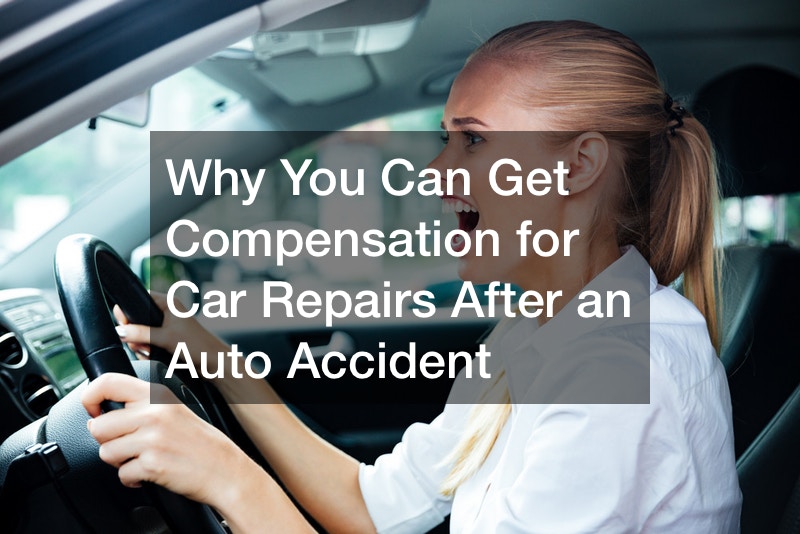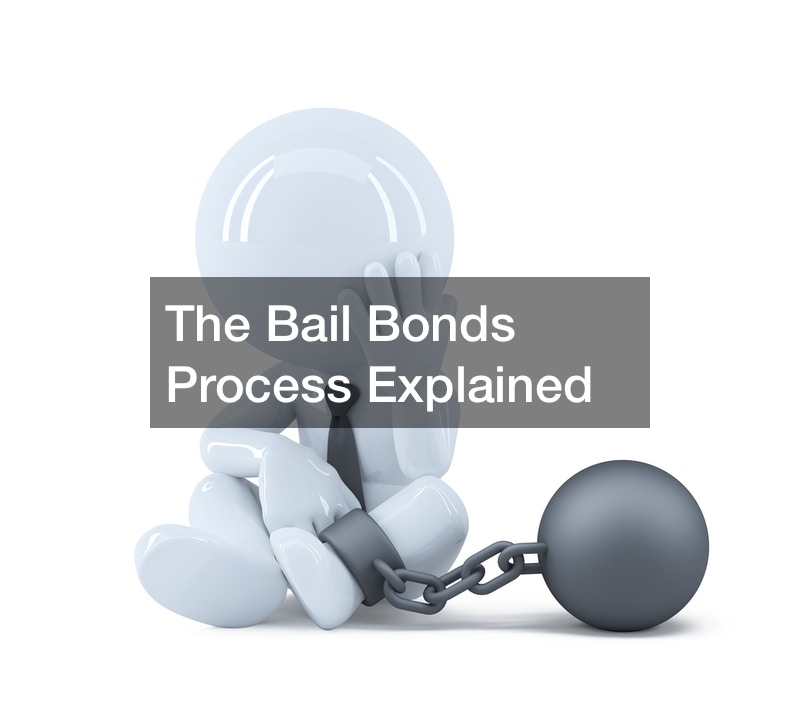
Auto accidents are untimely, costly, and a massive inconvenience to our daily life and routines. However, they happen more often than we would like them to, and unfortunately, some of us will have to deal with at least one incident in our experience as motorists.
After an auto accident, you wonder how to get repairs or replacements. The biggest concern is who is responsible for the financial costs. The response depends on several factors like who was responsible for the crash, the extent of damage, and the insurance coverage available.

Auto Insurance Coverage
Your insurer is responsible for payments up to the value of your car. So, if auto body repair costs exceed the car value, your insurer will declare it a total loss. They would then pay you the market value of your car and take possession of the vehicle.
Property damage claim is based on the value of your vehicle at the time of the accident. This value has nothing to do with your purchase cost of the car. Your insurer will pay for repairs or replacements up to the policy limits.
It is essential to state that most insurance covers do not cater to expenses such as auto glass repairs. That is unless you have signed up for a comprehensive insurance package. To be specific, check with your insurance provider and go over what is covered.
After an auto accident, some parts may require replacements rather than total repairs. Instead of buying new parts which could significantly raise your claim value, you may opt to check out recycled auto parts in your local auto repair shop.
Other Drivers at Fault
If the other driver was at fault, you might file a claim with their driver’s insurance company to get compensated for repairs and replacements. With this claim, you are insured by third-party insurance, but the coverage is exempt from any injury incidents.
As soon as you have your repair estimate, you should be in contact with your insurance adjuster. However, if there are any injuries, you will need to wait until your medical condition is stable before contacting automobile insurance. Your adjuster will request car inspections or alternative car repair estimates.
If you have more than one repair estimate, insurers will be less likely to argue with you. It would help if you were better positioned to say that repair costs are fair and reasonable. Alternatively, the third-party insurance company may accept the first estimate you present and consider it a fair settlement.
However, they also have a right to inspect the damages and determine their repair costs. Your presence at this inspection is mandatory and should be done at your convenience. The best alternative is to take the damaged auto to an inspection site or repair shop. Either way, the sooner you and the insurance adjuster can agree on an inspection, the quicker you can resolve the matter.
Having agreed, you should have negotiations about how much compensation is due. If you have repairs approximate to the actual cash value of your vehicle, start gathering info on your specific region.
The first rule is that the party who caused the accident will be held responsible. They will be expected to cater for all necessary repairs, from minor scratches to major body work. If the car I declared a total loss, the responsible party will have to pay for the vehicle’s market value at that time.
Some states have instituted a no-fault car insurance policy which states that the responsible party should cover most medical bills and some of the victim’s lost revenue. This compensation is paid into the injured person’s insurance coverage. Uniquely, car damages are not included in no-fault car insurance system compensation.

When You’re at Fault
After an auto accident, if you caused the accident or the responsible party lacks insurance, there are a few ways to resolve the issue. For automobile insurance, including collision coverage, it may be easier to settle the costs incurred. This insurance type may pass as a no-fault coverage because it covers a totaled vehicle’s actual cash value regardless of who is responsible.
Keep in mind that this process attracts a deductible fee. However, you may recover this deductible after your vehicle” insurance claim reimbursement from the at-fault driver’s insurance carrier. When this happens, it is known as insurance subrogation.
After an auto accident, repairs are very inconvenient; sometimes, you want to return to the road. You may pay out of pocket and wait for your reimbursement if that’s you. It is essential to note that this faster method can put your compensation at risk. There are two reasons why.
First, the insurance adjuster may think you overpaid for your repairs and will limit the compensation to a value much lower. In so doing, your payment would be less in value compared to the settlement. Second, the other driver might lobby against being at fault or trivialize the extent of the damage. In which case, you would have to wait longer to get reimbursed or not get compensated at all.
If you happen to be drunk or intoxicated while driving, you may face serious charges and state fines. After an auto accident including a drunk driver, it usually attracts high compensation for the victims. This payment includes their medical bill, treatment, lost income and pain and suffering endured after an auto accident.
Claim Process
The procedure for car insurance claims after an auto accident depends on the involved insurance carriers and the present circumstances. Nonetheless, there are four general stages to go through in any claim insurance process.
Inspection of the vehicle is first, followed by the assessment of the damages based on their extent and nature, then the valuation of actual cash value, and finally the compensation if all goes well. The process will be long and engaging. It would help to hire the services of an attorney to make it more seamless for you.
To prove property damages, ask your insurance adjuster or personally select an auto body shop. They can identify damages and draw up a repair estimate.
Insurance companies will use this estimate plus evidence of how the collision happened. They use photographs of the damages and the scene after and auto accident to aid evaluation. Agencies go into deep details such as the weather, traffic flow, direction of travel of those involved, and anything extraordinary that could have contributed to the collision.
After evaluation, insurance companies may either compensate your exact repair estimated value, pay you a different amount, refuse to pay, or declare the car totaled and compensate you for its value.
Disagreements
If you disagree with the decision taken by your insurance adjuster, you have ways to try to turn this around. You may renegotiate with the adjuster to convince him to change his mind. You could collect more evidence of damages and demand your estimate’s value. Alternatively, you could impress the adjuster to see how the other driver is responsible for the collision.
If you are working with an attorney, he would advise you on whether to file a formal lawsuit against your insurer or the other party’s insurer. Experts are better placed to direct your steps based on your unique circumstance.

Five Steps to Take After a Car Accident
If you suffer injuries after an auto accident caused by another driver’s negligence, your right is to be compensated for your losses. If you are ever involved in an auto accident, take these five steps to protect yourself and help secure your compensation. Documentation, patience, and persistence are required to protect your right to compensation.
Step 1: Documentation
After an auto accident, things can get chaotic. If you are fit and well, quickly take pictures of the crash and other relevant details that could help your case. Getting immediate medical attention should be your first priority if you are hurt. Gather good evidence because it is key to securing your claim.
Use your phone to capture images of the injuries sustained, the vehicle involved, and general details of the scene. Take a good picture that can be admissible in a court of law just in case you need them.
Be proactive and approach eyewitnesses to get an account of what they saw. Find their contact information, ask follow-up questions, and request them to write a statement or talk to an investigator. Your claim is more potent when you have several confirmations of your version of the accident.
Get the police involved to add another layer of documentation to your claim. With a police report, your insurance adjusters’ and attorneys’ work will be more effective with the report details the scene of the accident, damages, and liability. The responsible party might want to keep the police out of it. You are advised to notify the police and protect your rights.
Step 2: Seek Medical Attention
After an auto accident with injuries, you must seek medical attention immediately. Doctor’s notes, bills, and records are the best forms of evidence to prove your injuries and expenses. This evidence is irrefutable to your insurance company and the at-fault driver’s insurance. With this in hand, you have proof of your physical condition and can support the value of your settlement demand.
Remember to follow the doctor’s orders without fail. Respect these directions if you have been restricted from doing some tasks or activities. With insurance claims, perception plays a role in getting your compensation. The worst thing would be for the insurance adjuster to think that you are faking your injuries, in which case your claim will be rejected.
Step 3: Get Repair Estimates
Get active and help your case by getting two or three repair estimates from local auto body shops. Insurance adjusters will push for auto inspections on the damage to your vehicle. You may use your estimates to argue strongly for total compensation after an auto accident. As you look into repairs, consider auto recycling if it is sensible and available in your region.
Step 4: Be Patient, Professional, and Persistent
Keep in mind that as much as the claim process is long and frustrating, your case is one of many that your insurance adjuster is handling. This is why you need patience and persistence when dealing with insurance experts.
It helps to stay in the adjuster’s good graces because they hold the key to your compensation. If you can create and maintain a good rapport with them, they could help maximize your settlement amount. Keep an open line of regular communication to check on your claim. Again, because cases are many, do not get angry when your case is put on the back burner. Remain courteous and professional at all times.
Step 5: Talk to a Lawyer
Unfortunately, sometimes it will seem fruitless to wait on your insurance adjuster to make progress. If it’s taken too long for your adjuster to give you feedback or a way forward, hire an auto insurance attorney. The lawsuit threat and attorney involvement motivate adjusters to expedite your compensation.
A premier DUI attorney is vital if you were drunk driving during the accident. These professionals can help minimize your charge or get you off jail time after an auto accident.

The Bottom Line
Auto collision repair is an expensive and profoundly involving process that can be super frustrating to experience. This article’s great tips and insights should help you handle this challenging experience like a pro.
Gathering relevant data to support your claim, being well prepared with insurance cover, keeping a positive mindset, and knowing when to involve an attorney is critical takeaways. If you can follow through the process with these in mind, you should be able to get compensated for your losses after an auto accident.
Learn more about when to hire an attorney after an auto accident. You can also connect with us directly to begin the process of your auto collision repair.



